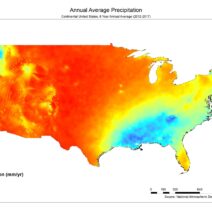Climate is a term frequently invoked in discussions about our planet’s future. But what precisely does it signify? The definition of climate is multifaceted, encompassing a variety of factors that work in concert over extended periods. Let’s dive into the intricate definition of climate, its significant elements, and why understanding this term is crucial for environmental awareness and action.
In its simplest form, climate refers to the long-term patterns of temperature, humidity, wind, precipitation, and other atmospheric conditions in a particular area. Unlike weather, which can fluctuate daily, climate represents the average of these conditions over an extended timeframe—typically three decades or more. This distinction raises an intriguing question: if climate is the long-term story of an environment, how can it narrate the fate of our planet in the face of undeniable changes?
To address this query, one must first explore the multifarious components that construct climate.
Understanding Climate: More Than Just Temperature
The core elements that define climate include temperature, humidity, atmospheric pressure, wind, precipitation, and the frequency and intensity of various weather phenomena. Each of these factors contributes to the overarching climate profile of a region. For instance, while a desert may be characterized by minimal rainfall and extreme temperature fluctuations, a tropical rainforest is often recognized for its high humidity and consistent precipitation. This interplay of various elements determines not only local ecosystems but also agricultural viability, water resources, and overall quality of life.
Moreover, climate can differ dramatically from one region to another, influenced by geographical aspects such as latitude, elevation, and proximity to oceans or mountain ranges. These geographical determinants shape regional climates. For instance, places near the equator typically experience warmer temperatures year-round, while areas at higher elevations or latitudes see a wider range of temperature variations. This begs the question: how do we reconcile local climatic conditions with global climatic shifts?
The Significance of Climatology
Climatology, the scientific study of climate, plays a pivotal role in understanding these complex patterns. Climatologists analyze historical climate data, looking for trends and anomalies that can indicate how climatic systems are responding to both natural processes and anthropogenic influences. By examining these trends, experts can predict future climate scenarios, which is critical as society navigates the challenges of climate change.
One such challenge is the human-induced climate alteration, often referenced as global warming, whereby greenhouse gases released through industrial activities, deforestation, and other means have led to rising global temperatures. This phenomenon underscores an urgent call to action: Can we mitigate these changes while still fostering economic growth and development?
When we consider the implications of climate change, the need for proactive measures becomes apparent. The consequences of shifting climatic conditions can be dire—rising sea levels, more frequent extreme weather events, and disruptions to food and water security are just the tip of the iceberg. Therefore, it is imperative to grasp not just the definition of climate but also its underlying dynamics and future trajectories.
The Interconnectedness of Climate Systems
One cannot discuss climate without acknowledging the intricate systems that intertwine our planet. Atmospheric conditions do not operate in isolation; ocean currents, land forms, and even biological processes all contribute to shaping climate. For instance, the El Niño-Southern Oscillation—a periodic fluctuation in sea surface temperatures in the Pacific Ocean—exerts significant influence over weather patterns in distant regions, impacting everything from monsoon seasons in Asia to hurricanes in the Atlantic.
This interconnectedness leads to the realization that climate is not merely a scientific abstraction; it is deeply engrained in the cultural, economic, and political fabrics of societies around the globe. What does this mean for policymakers, businesses, and communities? How can we ensure that a comprehensive understanding of climate influences our decisions and actions moving forward?
Climate Adaptation and Mitigation Strategies
As we grapple with climate change’s repercussions, the conversation inevitably shifts towards adaptation and mitigation strategies. Adaptation involves making adjustments to social, economic, and environmental practices to minimize vulnerability to climatic impacts. On the other hand, mitigation focuses on reducing the severity of climate change by curbing greenhouse gas emissions and promoting sustainable practices.
We face a dual challenge: to adapt to the changes already underway while simultaneously working to prevent future damage. This could include sustainable land-use practices, renewable energy initiatives, and urban planning that incorporates climate resilience. However, this demands significant cooperation across all sectors of society, which can often be a daunting endeavor. Are we prepared to mobilize our resources for this collective challenge?
In closing, understanding the definition of climate extends beyond mere words. It is about recognizing the delicate balance of our Earth’s systems and the pressing necessity for concerted action against climate change. By grappling with the complexities of climate, we empower ourselves to make informed decisions that not only affect our present but also secure a sustainable future for generations to come.






